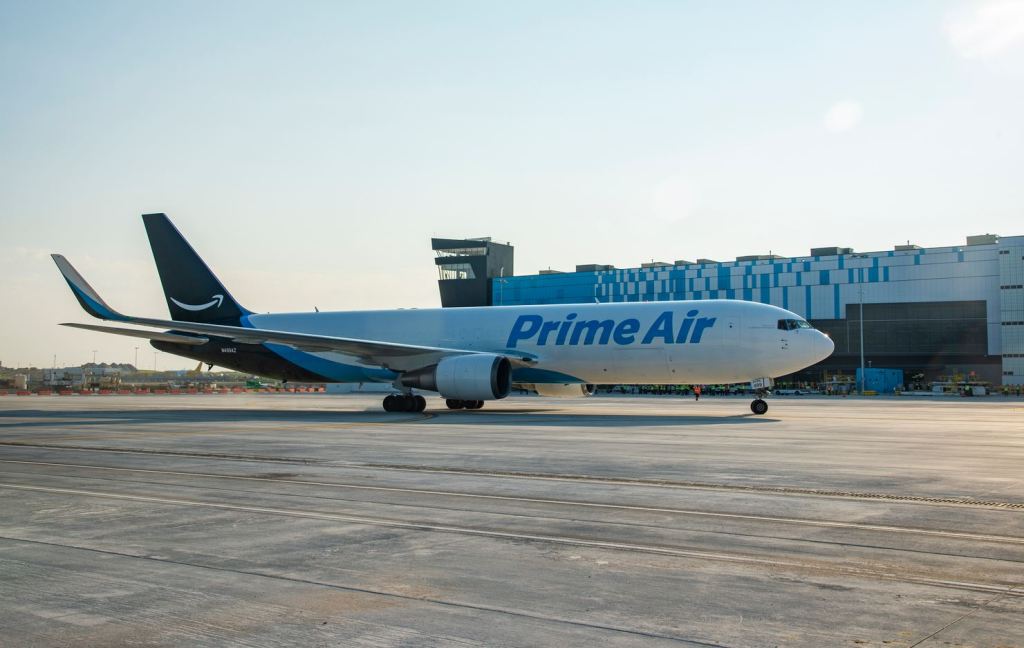Amazon Air’s new third-party service offering will benefit from the airline’s directional imbalance, the increased regularity of its services and the recent expansion at some of its main hubs.
In an analysis of the launch of Amazon Air Cargo, Joseph Schwieterman of the Chaddick Institute found that the move has “considerable upside potential” for Amazon Air.
Firstly, Schwieterman said the move would help address a directional imbalance of cargo at some of its main hubs, where there are more outbound than inbound shipments.
According to his analysis, Amazon’s Cincinnati (CVG) hub has a directional imbalance of 17.7%, at Fort Worth the difference is 25.7% and at San Bernardino (SBD) the gap is 32.2%. This is a greater imbalance than the likes of integrators UPS and FedEx at their main hubs in the US.
“Air cargo integrators face less extensive imbalances partially because of their ‘anywhere to anywhere’ business models, which results in large volumes of traffic originating at hundreds of locations worldwide,” he said.
“The evidence indicates that Amazon Air’s more specialised role, focusing primarily on business-to-consumer and business-to-business shipping, results in a disproportionate share of traffic originating at a limited number of fulfillment-center and warehouse clusters, such as those around CVG and SBD.”
Carrying third-party traffic could help eliminate some of this imbalance, he said.
Meanwhile, the company’s schedules have become more regular in recent years.
“A second factor boosting Amazon Air’s prospects for third-party shipping is its enhanced ability to sell its available freighter space well into the future due to increased regularity in its flight schedule,” Schwieterman said.
“The hopscotch-style network prevalent during the early pandemic period, when schedules and routes were highly fluid, is mostly gone. Some Amazon Air planes, like one of the newly acquired A330s, essentially operates the same routes day after day.
“The regularity allows excess capacity to be sold with less risk that it will interfere with Amazon’s internal needs.”
Schwieterman added that Amazon has also been ramping up the number of flights it operates out of its CVG hub, with several more daytime flights added out of the airport since the start of the year.
The number of flights at secondary hubs has also expanded, with flights at its five main hubs now representing 80.5% of its total compared with 65.5% in early 2021.
“Such concentration makes it easier to attract customers with large-scale shipping needs,” Schwieterman explained. “Although directional imbalances bring added complexity, Amazon Air’s hub expansion is multiplying its opportunities for third partners at key logistics locations.”
At the recent TIACA Air Cargo Forum, Amazon Air Cargo global director and general manager Tom Bradley was asked how the airline would balance its core Amazon business with its new air cargo business.
Bradley admitted it was a question he was being asked a lot but said technology and its wide network would help eliminate any potential clash between the two.
“Ultimately, we don’t need to make that decision [between an Amazon package and air cargo shipment] very often and that is mainly driven by technology and our network.
“From an air perspective we have a dense network with the combination of hub and spoke and point to point and that will give us a lot of air flexibility.
“But we also have a ground transportation network, both road and rail, that is the most dense in the US so that gives us a ton of options.
“That is paired with technology – we have real-time dynamic routing that can send Amazon customers packages by millions of different route combinations and we can make real time capacity adjustments – so we very rarely have to choose between an Amazon package and an air cargo packages because of that density and flexibility.”
The airline’s new third-party operation can provide space on more than 100 aircraft with more than 250 daily flights, including partner airlines, and will also offer ad hoc, charter, or block space services.
The airline said it would be able to carry general cargo, pharmaceuticals, perishables, dangerous goods and parcels with its fleet of Boeing 737, Boeing 767 and Airbus A330 aircraft.
Amazon Air Cargo confident it can balance third-party volumes with its own packages
Amazon Air takes on cargo carriers with launch of sales to third parties
The post Upside potential for Amazon’s move into air cargo appeared first on Air Cargo News.



